Practical Ways to Include Kids in the Household Upkeep
OK — so hopefully we’ve convinced you to stop doing everything for your kids, and instead to welcome (and expect) your children to help out with the general upkeep of the family before you accidentally teach it out of them!

But where do you start?
Below are some conceptual tips for shifting your frame of mind to help smooth things over all around, followed by some *solid strategies for bringing your kids into the fold of every day life. First, a quick note on rewards…
On Rewards
Cognitive science indicates that people are more likely to do something they are internally motivated to do than something they are required to do. This would suggest that we’d be better off to treat chores as a sort of revered contribution (or else fun or engaging), something our kids should be proud of, rather than assignments or drudgery.

Most experts aren’t big on allowances, bribery, or other short-term incentives, BTW, because:
1) They often work in the short term, but fizzle out for the long haul (unless you keep upping the ante);
—
2) They coach our kids toward external motivation, toward thinking that their contributions are transactions rather than innate expectations; and
—
3) It insinuates that work the child is being asked to do is not normally expected of them, but rather that it’s “extra” and requires some sort of payment or exchange.
That said, using rewards that align with “real life,” or allow natural consequences to unfold, seems valuable. For example, we remind our children that we won’t have time to do X (play, read another book, watch a show, anything) until certain work is done.
This kind of “reward,” strikes us as fundamentally different from bribery (allowances, toys, junk food, and the like) because it mirrors what happens in real life, for adults, on a smaller scale (work now so you can play later).
Unless you want to do this →
… which is totally hilarious (and diabolically genius).
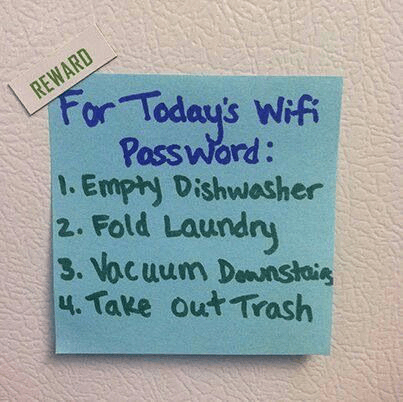
Abstract Alterations:
Before we get to the main event, here are some general tips for success:
- First things first: remember, start young. Expose your kids to the workings of the household from a young age. You can start by just letting your toddler watch you do something. Tell them what you’re doing and why you’re doing it; over time, you can invite them to partake in some of the steps (or more likely, they’ll ask to join in).
- Speaking of which, take the time to teach your child how to do the task at hand. Toddlers are fast learners, but they do not innately know how to fold hand towels or wipe down a table (sigh).
- Don’t think about “chores”; focus on having fun together with your children — this will draw your kids in and keep them engaged. It can even help to talk about tasks as “ours,” rather than “mine” or “yours” or “hers.” It helps cultivate a sense of communitarianism about running the house and also conveys that it’s expected for everyone to help everyone else out. #teamworkmakesthedreamwork
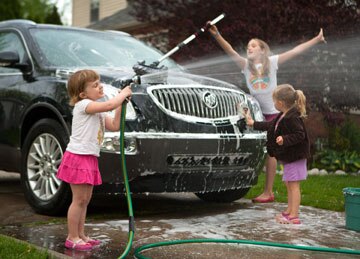
- Think Long Term. Remember that having your kids pitch in is not about getting “X” done right now… it’s about preventing entitlement before it happens; it’s about establishing habits and norms for your family’s home. Remember (and keep reminding yourself!…): it’s a marathon, not a sprint.
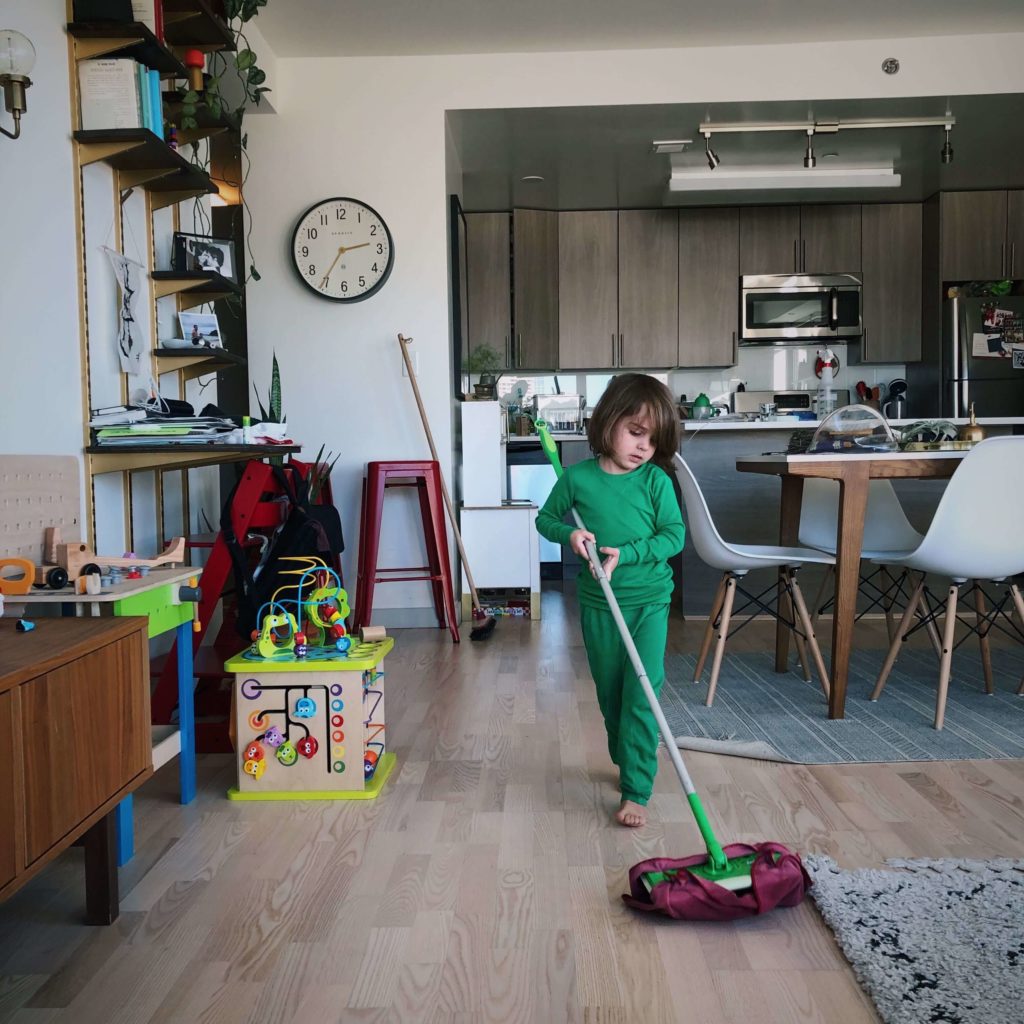
A child’s contributing to The Upkeep is “not simply an item on a checklist you post on the refrigerator but a process, an education.”
~Jessica Lahey, Slate.com
- Build in extra time. With little children, the adage that many hands make light work does not apply… at first. Initially, having your kids help out means that things are going to take longer — WAY longer — but know that extra time spent now will be well worth it down the road.
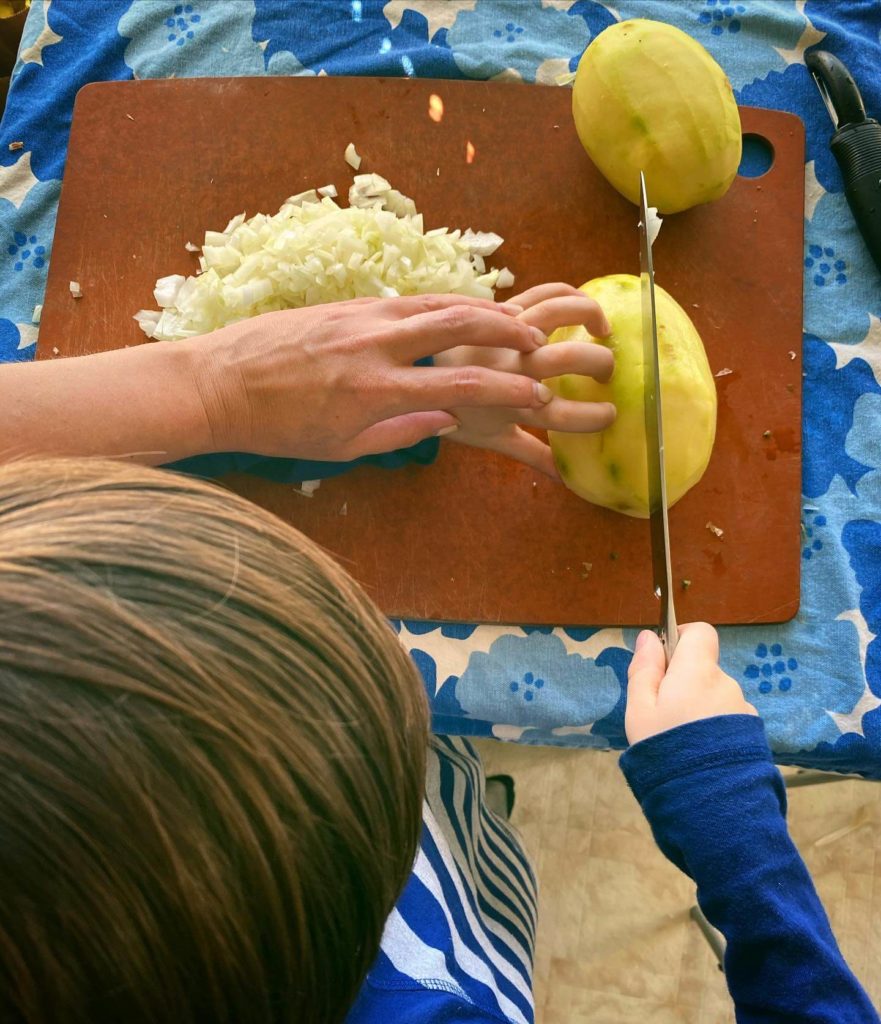
- Speaking of time, consider the timing of your requests. Just like us, our children may be better equipped (mentally, physically, emotionally) to help out at certain times of the day.
- Don’t force it. With young children, invitations to contribute (and accepting their own offers to contribute) are generally more successful than ultimatums, rules, or requirements. Just like cultivating a baby’s palate for veggies, recruiting children to the cause takes time and repetition. If they don’t want to help “this time,” you know there’ll be another chance soon enough.
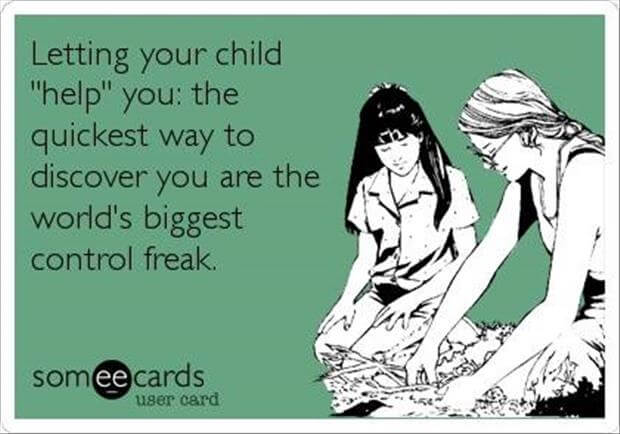
- And, last but not least: LET GO (this one is especially tough for me). Let go of the need to micromanage; let go of the need for something to be done to a tee; let go of the need to correct your child or re-do whatever they’ve helped you with; let go of the need for things to be done quickly, or even relatively quickly… It’s just not going to happen.
Think of it as an apprenticeship. If we nag them, intervene upon their every move or simply undo/redo their hard work, we’re either turning them off to offering their help in the first place or else teaching them that what they do doesn’t make the cut.
The Nitty-Gritty — Everyday Strategies for Getting Started:
The Upkeep looks different to every family, but we think the four most universal areas that amount to the majority of household work revolve around:
1. Mealtime;
2. General household cleaning;
3. Toys, books, and other kid stuff; and
4. Laundry.




Here are a few examples of specific ways that toddlers and young children can contribute to all that goes into these simple tasks of everyday life.
OK, fellow parents, here we go:
1. Mealtime
Most of us have our kitchens set up for adults, but if you take a little time to reconfigure your space, or even just invest in some booster stools, your kids will be able to help out much more easily.
For example, by creating a “kid drawer” or cabinet in a low spot children can easily access, you are empowering your kids to help themselves.
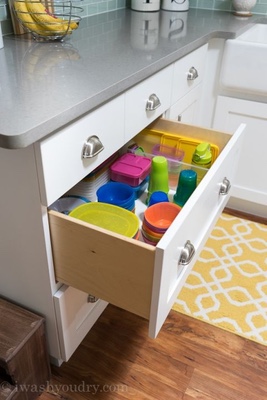
With plastic plates and cups and whatnot, there’s no concern about anything shattering. Check out our favorite feeding supplies for littles (good news: this kind of gear is pretty cheap, so it won’t break OR break the bank — and these days, there are many eco-friendly plastics available).
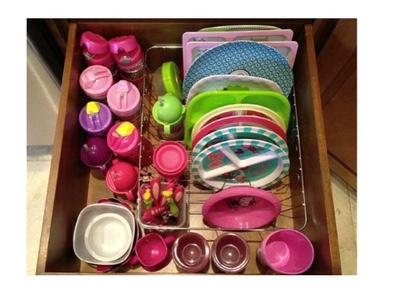
Seriously, friends, making your kitchen (and dishes) kid-friendly changes the whole game.
Here are all the many things your kids can help out with in the kitchen, followed by some tools and stools/towers to make the magic happen:
Meal Prep
- Set table (get out napkins, plates, placemats, forks, cups, condiments, etc. — one or any);
- Participate in meal prep/cooking to the extent it’s feasible (age-dependent, see below);
- Get own cup of water/milk;
- Help pack school snacks/lunches.

Clean-up
- Bring plate to sink;
- Help clear table of other items;
- Help load dishwasher/run dishwasher; add detergent, press buttons (yay buttons!!!);
- Wipe table clean;
- Help unload the dishwasher.
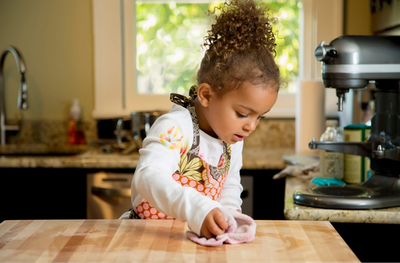
We suggest picking one meal a day to focus on (pick whatever is easiest for you), establishing a routine, and then expanding to other meals and gradually adding in other tasks.
For example, I would choose breakfast because my kiddos are total larks, and they’re always super excited about breakfast. Every morning, I ask my 2-year-old to get placemats and silverware for the table, and I ask my 4-year-old to get cups (and some days, pour the milk) for both him and his sister. He also carries the plates to the table when they’re ready to be served. Afterward, both kids bring me their plates and after I’ve rinsed them, help load the dishwasher.
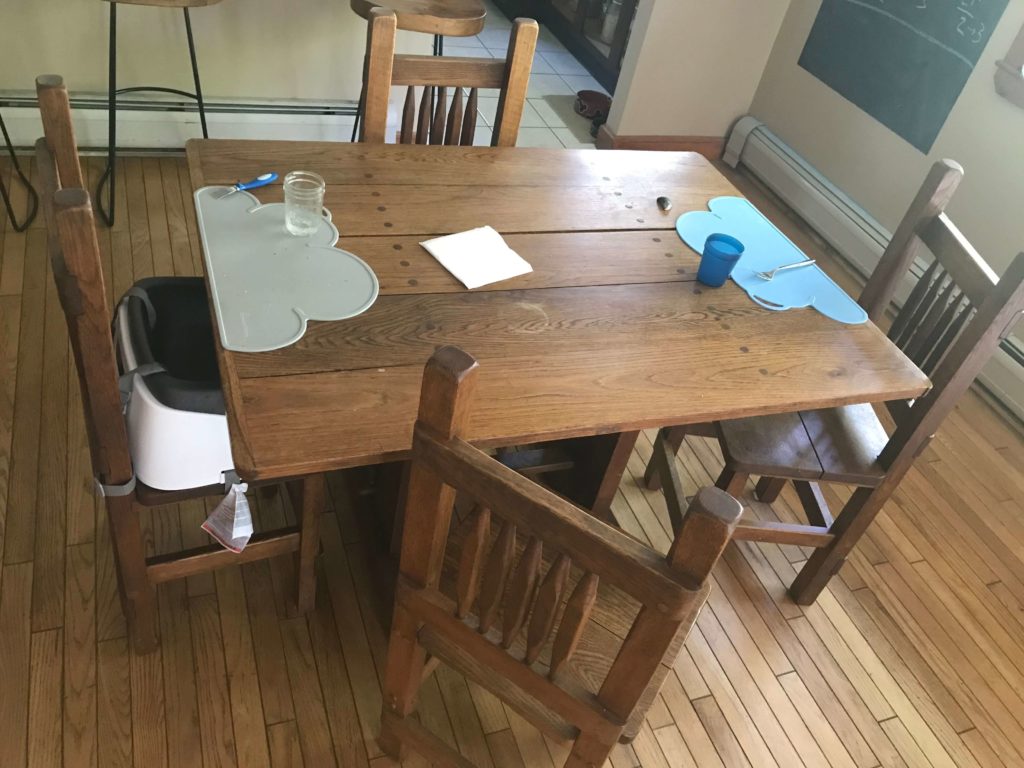
Public Service Announcement:
Rope your kid(s) into meal prep as soon as you possibly can. Please. Maybe your toddler can stir something, or push the button on the toaster, or put a piece of cheese somewhere. ANYTHING. Even just watch along.
The goal is to convey that preparing food is something that takes time and that someone (hmmpph, “someone”) has to actually do, and that mom or dad are not magicians who merely conjure up ready-to-eat food. This is not Bewitched.
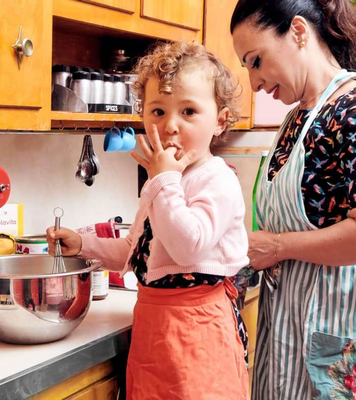
To make “cooking” easier (and more fun!), consider investing in some fun cooking tools your kiddos can use safely (example below). Please: let your kiddos practice cutting with kid-friendly knives so you aren’t still cutting their food for them when they’re 10.
This is an easy one-stop-shop to cover all the bases:
Tovla Kids Cooking and Baking Set
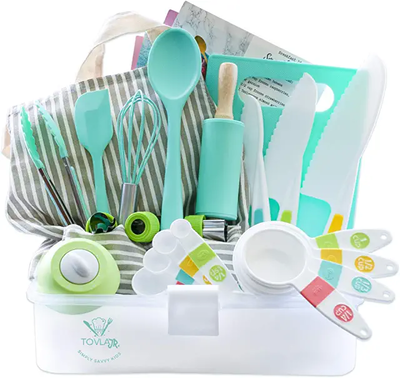
There are a number of Montessori school suppliers that have AH-mazing “real life” stuff for little kids, ranging from cleaning and yard work tools to meal prep, woodworking (!) and all the rest. The food prep gear is especially worth checking out.
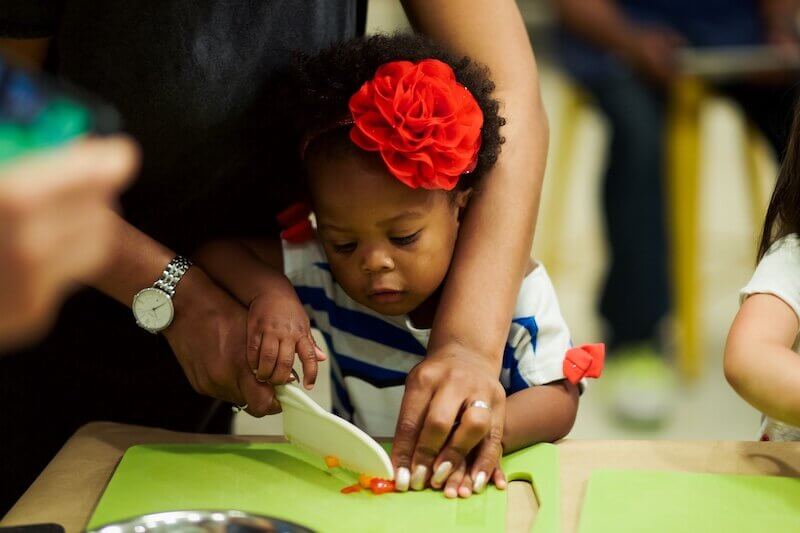
Stools and Towers
A simple step stool can give your little one a much-needed boost.
IKEA Bekväm Step Stool
This 2-step stool from IKEA is a crowd-favorite:
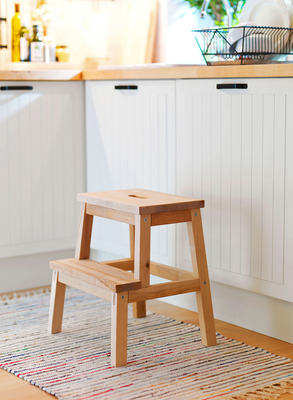
For younger toddlers who are more unsteady on their feet, check out Kitchen Towers (below), or you could even make one yourself if you’re handy. Kitchen towers can be shockingly expensive, but most families use them through many years/kids. You may also have luck finding one used, as they are often resold.
Here are a couple of great options:
Kitchen Helper Tower

Guidecraft Classic Kitchen Helper
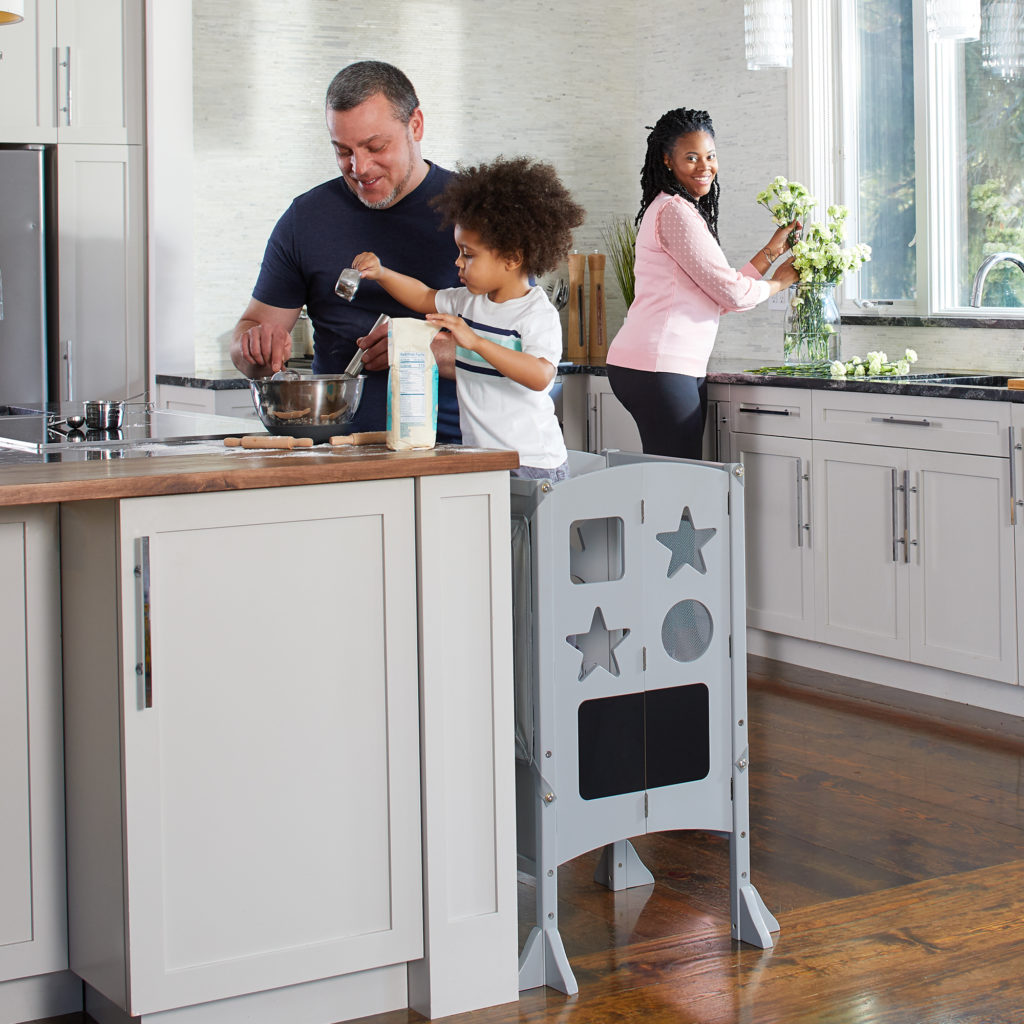
2. Household Cleaning
Starting from a young age, kids naturally want to clean up alongside mom or dad. There are so many different ways they can help with basic household cleaning, but these specific ideas come to mind:,
- Dust — just give them a wet rag, and kids LOVE to dust (don’t ask me why). And it’s actually so helpful!
- Sweep/vacuum small spaces (yes, kids can sweep! They get better at it over time. 😉);
- Wipe down counters;
- Change sheets and towels (with help);
- Make beds;
- Take out trash/recycling;
- Yard work — rake, shovel, garden, pick up sticks, water plants (outdoor or indoor).
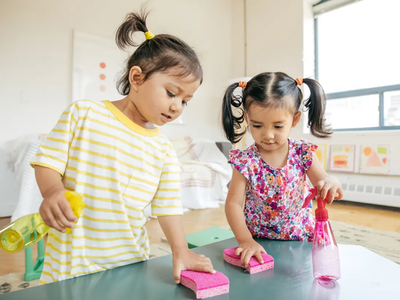
My kids love spraying vinegar solution on the countertops, then wiping them off. Over time, they get better at it (with coaching)!
A great way to start would be to pick one or two tasks you’d like to be willing to share with your children, and then schedule them. Literally.
If it’s an everyday task, like making the bed, add it to your morning routine — and make sure you carve out time for it. The last thing you want is to wind up rushing your little ones in the morning. That’s the perfect recipe for a meltdown. Whether it’s right at wake-up time or after breakfast — whenever — pick a time and stick to it. (As with most everything, consistency is key.) We decided our kids don’t even leave their room until their beds are made. It was brutal for the first week, but now it’s not even a “thing” — or, it’s no different than getting dressed in the morning (which is something of a thing, hah).
If you’re working on a task that needs to happen less frequently (like taking the trash out or watering the plants), pick one or two ten-minute periods each week and literally build it into your mental schedule. Example: on Wednesdays, we always water the plants on the porch right after naptime. Tuesdays, we take out the trash.
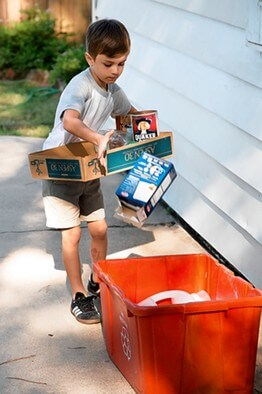
You get the idea.
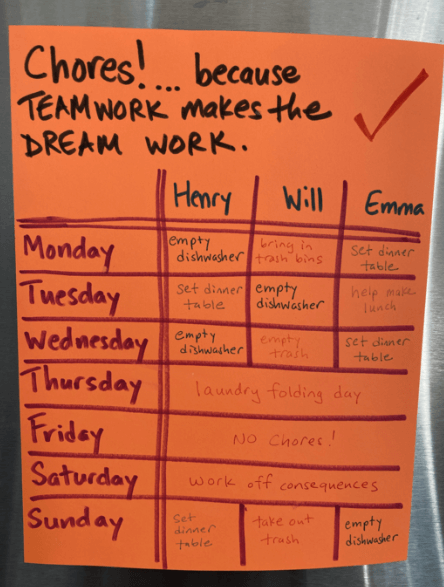
Kid-Sized Cleaning Tools
I once gave my 2-year-old a full size broom and watched in terror as she almost knocked down… well, everything. Don’t make the same mistake, friends. There are actually a number of fun, cordless, kid-sized (real!) cleaning tools that also liven things up. (These need not be too fancy, friends — you can find a lot of this stuff at the Dollar Store.) Here are some crowd favorites:
Kids Broom Set
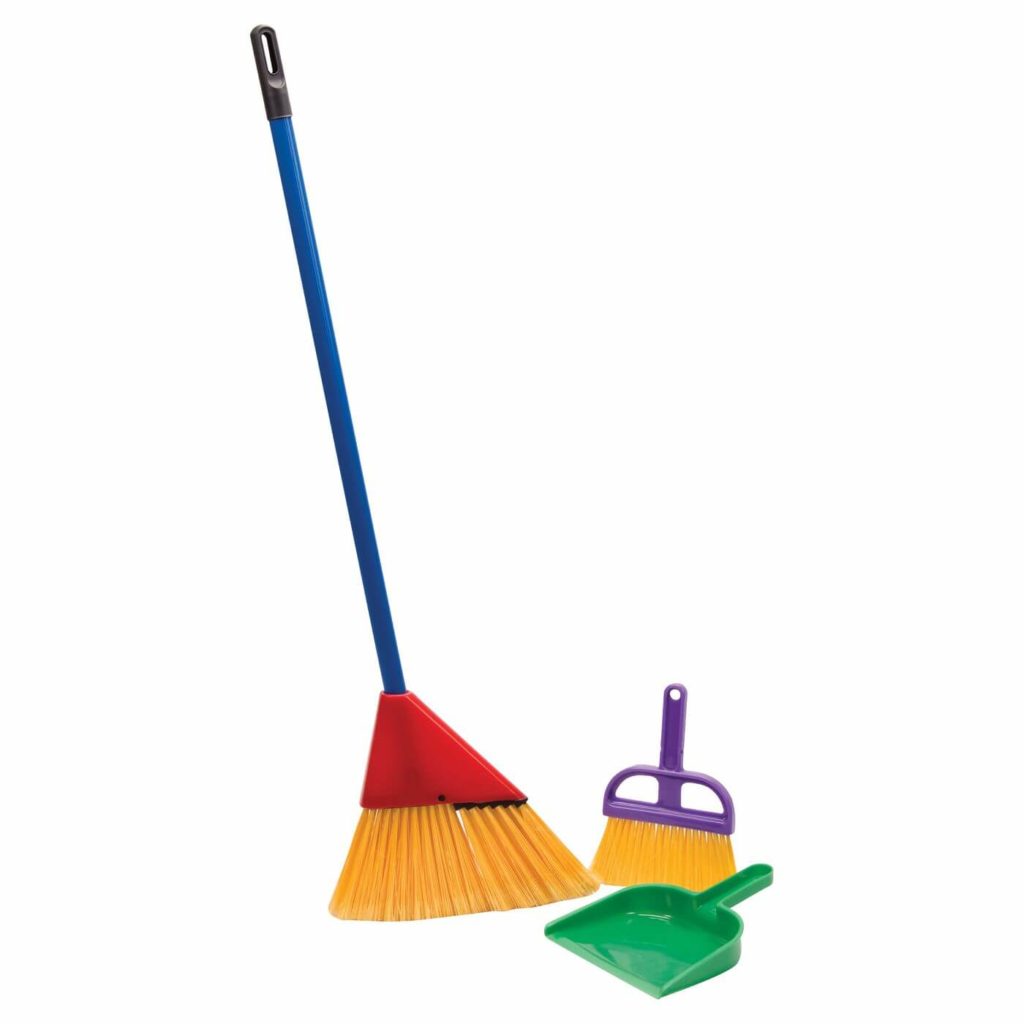
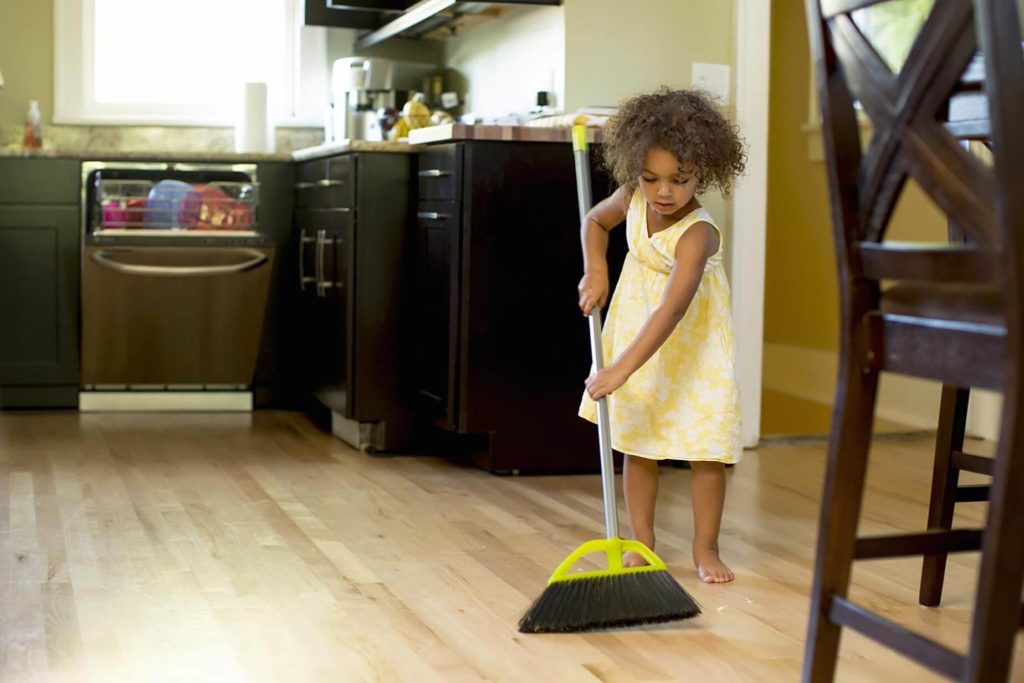
Carpet Sweeper
Dustbuster
You could also offer your kids a small vacuum like a classic Dustbuster to clean up crumbs, etc. (you guys, they LOVE this!)

Shark Stick Vacuum Cleaner
My kids love to use the stick vacuum cleaner I keep in the kitchen. Yes, they miss spots and it’s not perfect… but they’re learning! (The Shark is $$$, yes, but it’s amazing and converts to a dust buster, too. If you’re ONLY getting it for your kids, though, go for the cheaper version from Dirt Devil.)

Kid’s Garden Tools
Kids Garden Tool Set
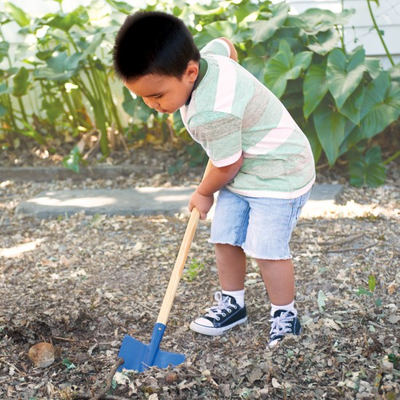
Snow Shovels
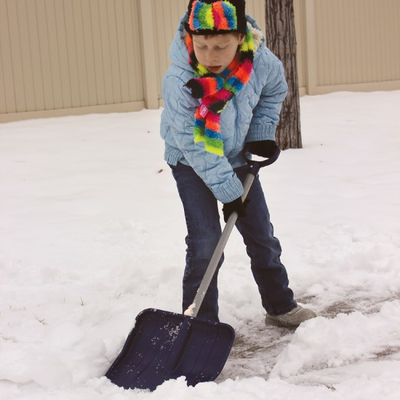
3. Toys
If you have little children, you may be familiar with the feeling of wanting to secretly drive off to throw all of your children’s playthings into the town dumpster after you trip over a Frozen doll for the fourteenth time — today. (No? Huh, guess that’s just me.)
Well — one of the simplest ways to tackle The Toy Problem is to identify a home for all of your kids’ toys.

Yes, specificity makes all the difference for toddlers. When I started identifying designated places for things (“the stuffed animal basket,” “the coloring book box”) my kids’ abilities to clean up these items improved overnight, because they had a manageable script/plan for cleaning those things and knew exactly where everything went. (Incidentally, specificity also works well for men 😉… kiddingnotkidding.)
Our colleague Marissa has tons of amazing suggestions and tips on toy storage/organization that can help you out in this department. (She’s a twin mom, so she knows.)
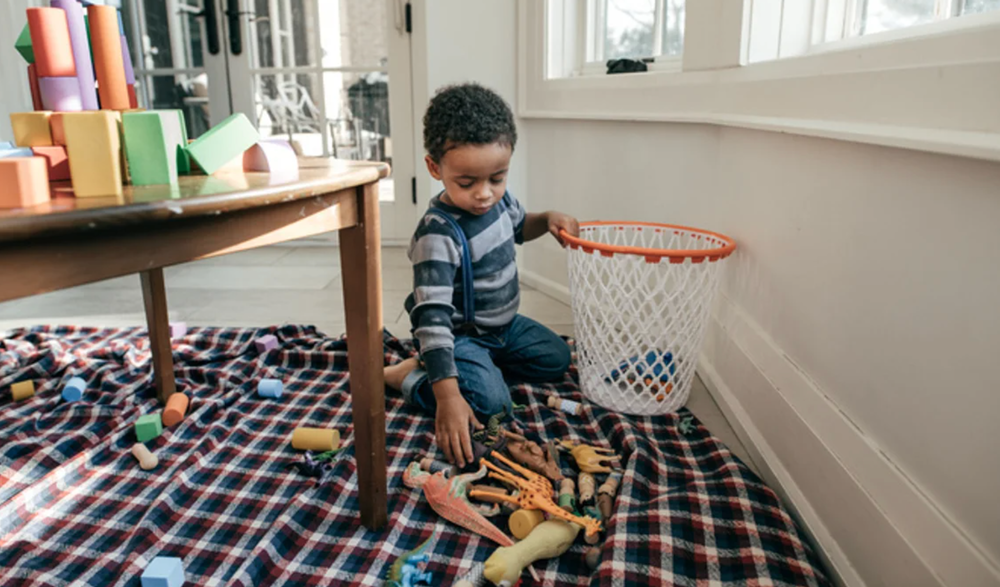
As with household cleaning tasks, pick specific times of day to routinize toy cleanup. We like right before lunch, dinner, and bedtime, but it doesn’t matter when — just decide on a time, and then hold off on “the next thing in the routine” until it’s done.
Natural Consequences
If the cumulative whine factor is uncontrollable: think about using natural consequences to your advantage.
Here’s an example: your child can’t find her favorite stuffed animal (imagine!). Perhaps you might tell her that if she had opted to put it back where it belongs, she’d know where it was. Better luck next time.
Another: I stole this idea from a mom who instituted “The Bermuda Triangle of Toys”: all toys left on the floor at the end of the day were lost to the Bermuda Triangle. Poof!
Do that once and they learn really fast!
Here are some different ways kids can help out with their own stuff:
- Toys: Pick. them. up!!
- Stack books back on shelves
- Put blocks/legos/trains/whatever back in bin
- Sort/organize — again, you don’t need anything fancy, but having specific containers for things is SO helpful
Here are some tools to help you get organized:
Color-Coded Bins
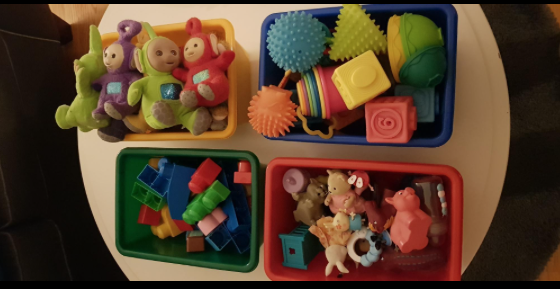
Crate & Kids Baskets
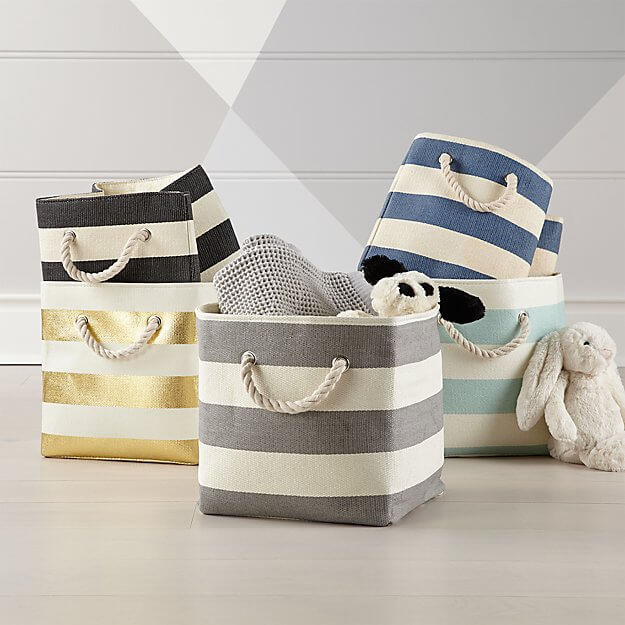
Ikea Trofast Storage Shelf
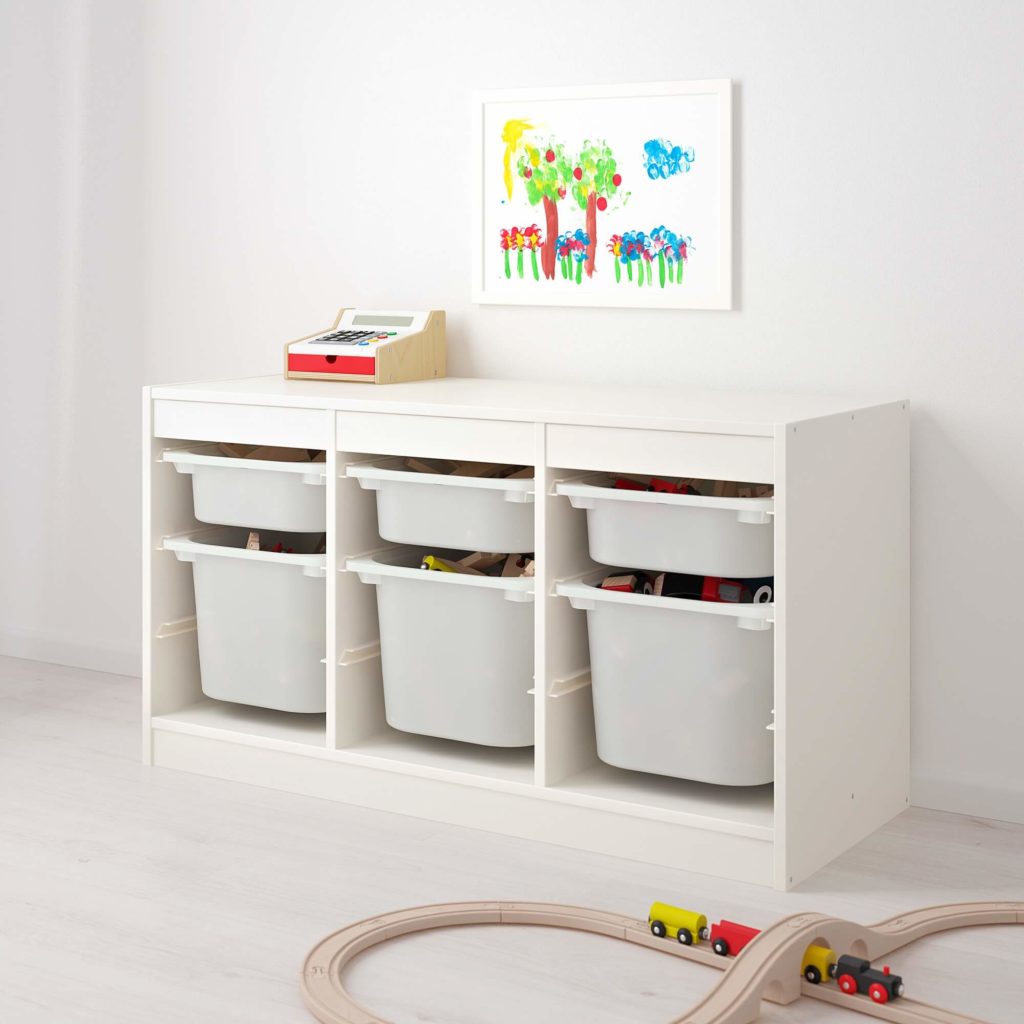
4. Laundry
Our first inclination is to keep children away from the task of laundry at all costs. After all, who hasn’t had the experience where your toddler dumps out all the folded clothes into a pile just for fun?
But there are many laundry-related things kids (even young kids) can do to help in the “laundry process.” Here are a few:
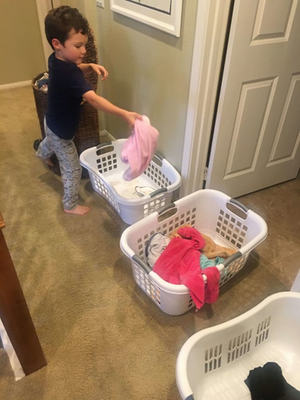
- Put their dirty clothes in hamper/laundry chute/washing machine;
- Sort laundry — lights vs. darks (this one is fun, and it’s a good way for your tot to practice his or her colors!);
- Help load the washing machine/switch clothes to the dryer;
- Start the washing machine or the dryer (detergent, buttons… kids love buttons!);
- Fold clothes;
- Stack folded clothes in piles;
- Put own clothes away in drawers;
- Pick out own clothes/PJs.
We’re probably beginning to sound like a broken record at this point, but start small and build up — pick something to work on with your child, and make it part of the routine. You’ll eventually be able to move on to more rigorous tasks.
Even if you don’t have the time to double down on something every time, perhaps you can start with letting your kids help just once a week.
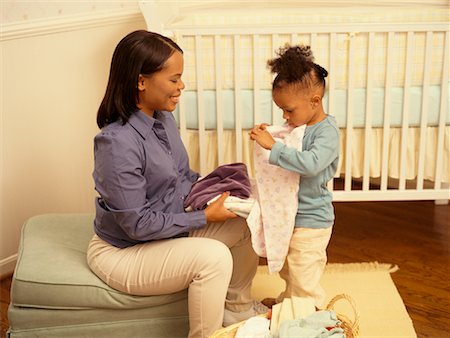
For example, pick one “laundry day” and commit to folding clothes together with your child at least once a week; or maybe you want to just focus on something quicker/easier to begin. At my house, I have my kids put their dirty clothes in the laundry basket every evening and also ask that they put their clean clothes away with me (though they get to be “the leaders”). We’re working up to “everyone folds together.”
More Opportunities for Kids to Help
Outside of those four main areas of The Upkeep, there are some other areas where kids can help out with “special duties” (and kids love nothing more than a “special duty,” believe me).
1. Packing for a Trip
Let your kids pack their own clothes for your next family trip (or their own “toy backpack” for the plane) — they’ll LOVE it, we promise! The first couple of times, try this together with your child so you can walk through how to think about packing.

You can discuss the basics: how long will you be away? What will the weather be like? What will you need or want to wear? Is there access to laundry? Over time, your child will become independently capable of packing appropriately on her own, and who doesn’t love the sound of that?
2. Saying Thank You
Some of us may have mixed feelings about traditional thank-you cards, but teaching and practicing gratitude with our young children (however you choose to guide them through it) builds the tradition of thankfulness. Sadly, thank-you cards often wind up feeling like yet another piece of The Upkeep, so think about inviting your children to partake in saying thank you, however they like.
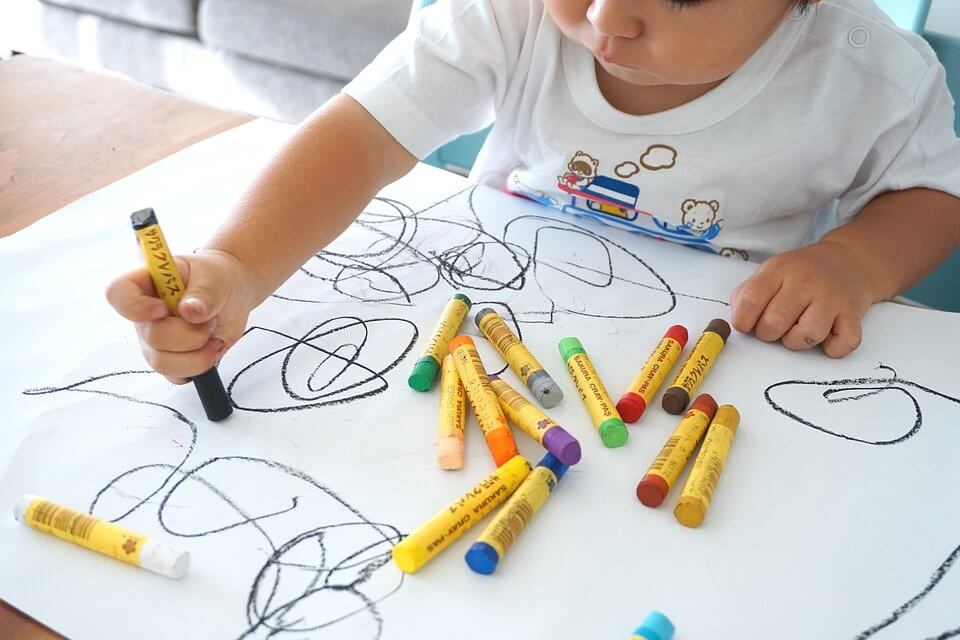
Whether it’s sending a video, drawing a picture, picking a special flower, or a big bear hug, there are endless ways we can help our children establish the habit of gratitude everyday. (Bonus tip: this is one area where knowing your child’s love language can be a big help.)
3. Pet Care
Kids LOVE feeding pets. Let them! Whether you have a pet that needs walking, feeding, bathing, cage cleaning, whatever — let your kids help you out when the time comes.

4. Bringing in the Mail/Newspaper
Walking out to the mailbox with my son is a fun little ritual now, and I’m already looking forward to the look on his face when I ask him if he wants to do it all by himself.
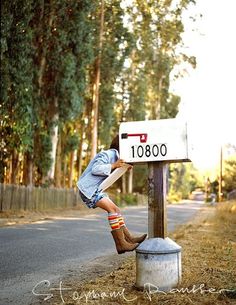
5. Putting Groceries Away
Little children really enjoy putting food wherever it belongs — even if they can’t reach shelves or cabinets, they can still help with the whole process by pulling things out of bags and handing items to you. (Note — this IS a problem if, like me, you have purchases you’re trying to conceal… like the nice chocolate… Busted.😂)
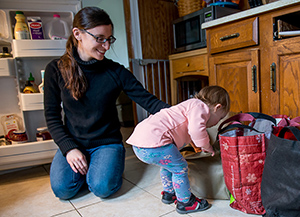
Conclusion
The depths of the pandemic were trying and devastating in so many ways — but they also resulted, for many of us, in some unplanned time for reflection. In forcing us to zoom in on our own households, the pandemic unwittingly compelled us, at least, to rethink some of our habits and our mindset when it comes to The Upkeep.
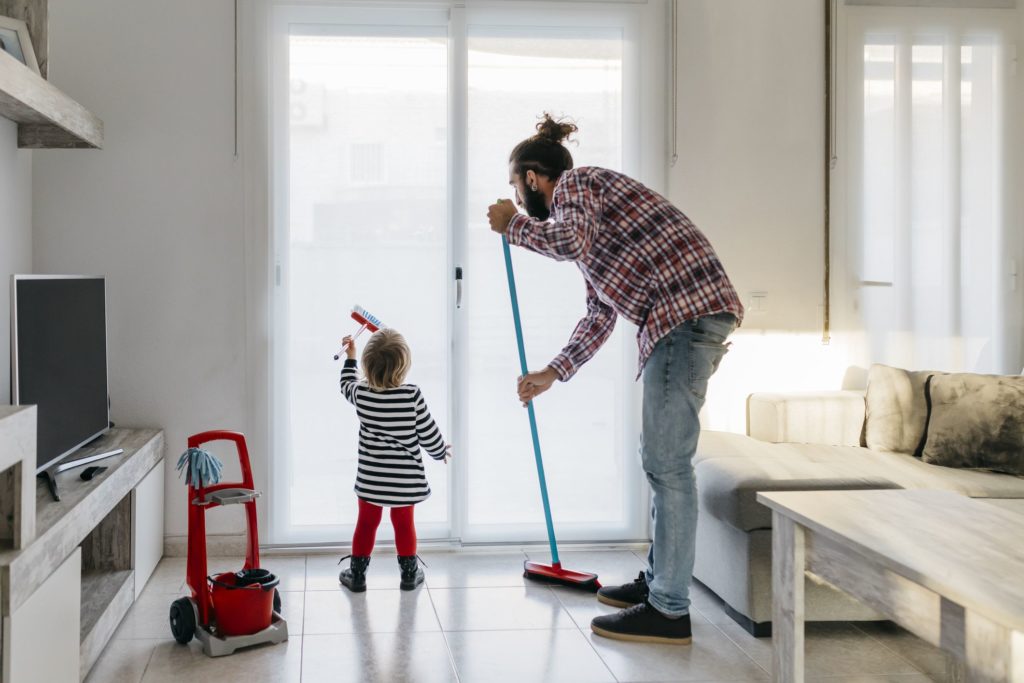
The Upkeep can — nay, usually — feel like a slog. But maybe it doesn’t have to.
We’re right there with you, friends, doing our best to rewrite the script, welcome our children’s help, and share in what it means to be part of a family — your family.
If you do give it a try, we’d love to hear from you. Let us know how things are going in the comments section — and thank you for subscribing!
Love this- so many great ideas to get my 2 1/2-year-old more involved!
I wanted to tell you that I started having my 2 year old wipe her high chair tray and herself after meals and I had her wipe up her spills a few times. This morning she spilled some milk on the floor and marched over to the sink and asked for her washcloth, walked over and wiped up the spill herself. I didn’t ask her to! Amazing!
Yes! This is amazing!! The toddler age may seem early but it’s the sweet spot 🙂
For laundry, I have my boys help move the wet clothes into the dryer. They like to be the “bulldozer” and push it in. Once things are dry, they collect the socks and underwear from the dryer. Those things don’t need folding! They are capable of making sock matches, and it becomes a competition to see who can get more. They also help with collecting the laundry from the hamper into the baskets.
This challenge has been really fun in my house, and reinforced many of the small things we do each day. I love it!
My kids have surprisingly been enjoying helping out this month! My 7 year old keeps asking what “week” it is! She and her 4 year old brother have particularly loved vacuuming up the “crumbinals” into crumb jail, and we having been playing “the floor is lava” for toys! Save them before they burn!! Muah-ha-ha!
This has been a fantastic challenge! It was fun to share with mom friends (around the world) and marvel how much kids love cutting stuff. Really, really love it. My kids bring their kid-friendly slicing knives to the table every night (and request a cutting board). Not exactly the intended outcome, but all buy-in at dinner time is a good thing.
I really loved how you coined concept “The Upkeep.” I’d been looking for a word for all of this and you’ve nailed it! This challenge has actually reduced the tantrums around clean-up for my 6 year old. Previously I heard a lot of “but I have to do EVERYthing (slumped shoulders)” when I asked for things to be put back or away. This go-round, the 3 year old cried once because his sister was so much more proficient at putting her clothes away (my ideal form of sibling rivalry).
My only ‘fantasy tweak’ would be that each theme lasted for 2 weeks, as sometimes it took a day or two for me to hit my stride with the ‘new area of the day.’